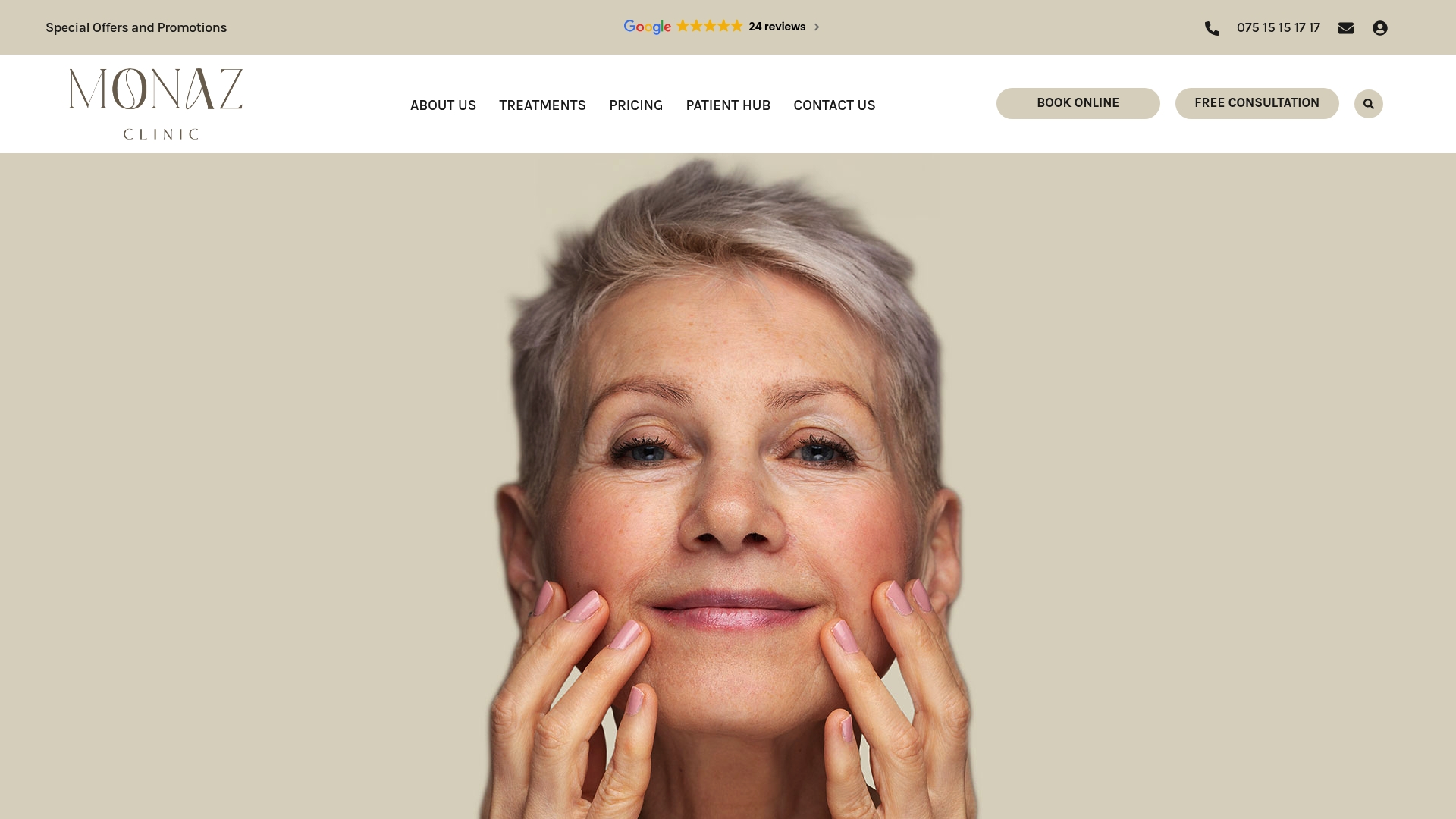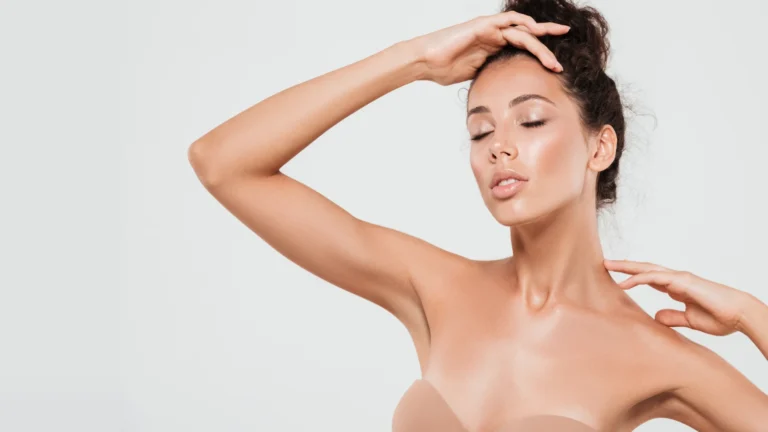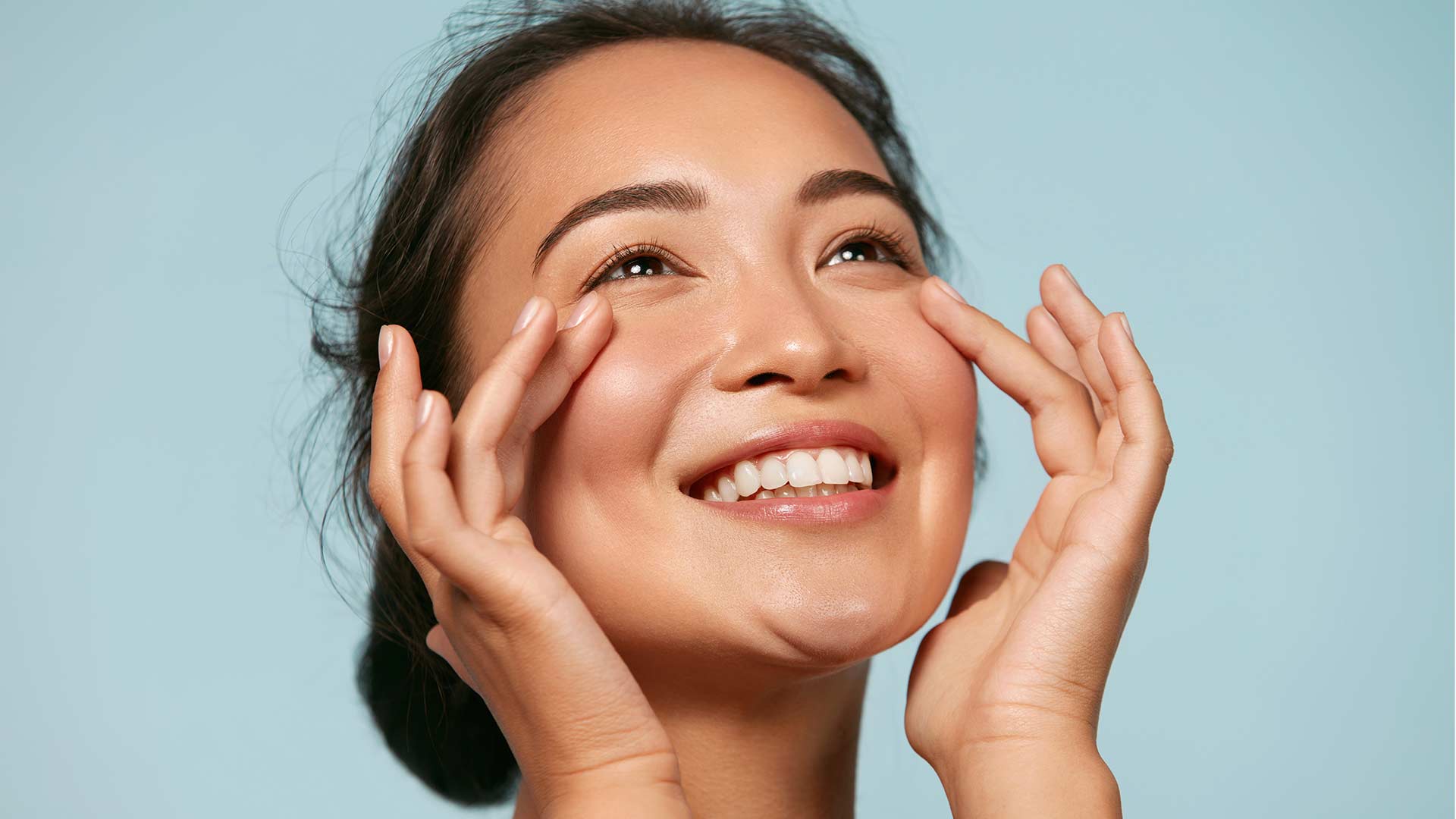Explore this dermal filler checklist with 7 essential steps to ensure safe and effective facial aesthetics for ladies in London and Harley Street.
Choosing the right dermal filler can feel overwhelming with so many options on the market. Hyaluronic acid fillers remain the most popular worldwide for their biocompatibility and natural results. Here is something most people miss. The difference between stunning results and disappointment often comes down to understanding the science behind each filler and selecting a practitioner with real expertise.
Table of Contents
- Understand The Different Types Of Dermal Fillers
- Research Your Practitioner’s Qualifications
- Assess Your Skin Type And Facial Goals
- Prepare For Your Consultation Questions
- Know The Aftercare Instructions
- Recognise Potential Side Effects
- Schedule Follow-Up Appointments
Quick Summary
| Takeaway | Explanation |
|---|---|
| Understand filler types | Familiarise yourself with types like hyaluronic acid and calcium hydroxylapatite for effective treatments. |
| Choose qualified practitioners | Verify medical credentials and aesthetic qualifications to ensure safe procedures. |
| Assess your skin and goals | Identify your skin type and desired outcomes for tailored treatment plans. |
| Prepare consultation questions | Ask about filler types, results, and side effects to facilitate informed decisions. |
| Schedule follow-ups | Regular follow-up appointments help monitor results and maintain long-term satisfaction. |
1: Understand the Different Types of Dermal Fillers
Navigating the world of dermal fillers requires a comprehensive understanding of the various types available. Each filler type offers unique properties and serves specific aesthetic purposes. Understanding the different dermal filler options is crucial for achieving natural-looking and personalised results.
The primary categories of dermal fillers include hyaluronic acid (HA), calcium hydroxylapatite (CaHA), poly-L-lactic acid, and polymethylmethacrylate (PMMA) fillers. These fillers differ significantly in their composition, longevity, and intended treatment areas.
Key characteristics to consider when selecting a dermal filler include:
- Molecular structure determining the filler’s flexibility and integration with facial tissues
- Longevity ranging from 6 to 24 months depending on the specific product
- Treatment area compatibility for precise aesthetic enhancements
According to research published in the Journal of Cosmetic Dermatology, hyaluronic acid remains the most popular dermal filler due to its biocompatibility and natural appearance. HA fillers are particularly effective for volume restoration, fine line reduction, and facial contouring.
For patients seeking targeted aesthetic improvements, consulting a medically qualified practitioner becomes essential. Professional assessment ensures that the selected dermal filler matches individual facial anatomy, skin type, and desired aesthetic outcomes. Each filler type presents unique advantages, making personalised professional guidance paramount in achieving optimal results.
2: Research Your Practitioner’s Qualifications
Choosing a qualified practitioner is arguably the most critical step in your dermal filler journey. Medical credentials, professional training, and specialised expertise are non-negotiable factors in ensuring safe and effective aesthetic treatments. Understanding what qualifications to look for can protect you from potential complications and suboptimal results.
According to the General Medical Council (GMC), patients should prioritise practitioners with clear medical registration and specific aesthetic treatment credentials. Critical qualifications to verify include:
- Registered medical professional status (GP, Nurse Practitioner, or Aesthetic Doctor)
- Specific aesthetic medicine certifications
- Ongoing professional development in cosmetic procedures
- Insurance coverage for aesthetic interventions
Beyond formal qualifications, potential patients should investigate a practitioner’s professional reputation and clinical experience. This involves examining their portfolio, patient testimonials, and before-and-after photographs. Transparency about procedures, potential risks, and expected outcomes is a hallmark of a trustworthy aesthetic professional.
When evaluating a practitioner’s suitability, consider requesting:
- Detailed consultation demonstrating comprehensive understanding of facial aesthetics
- Evidence of successful previous treatments
- Clear communication about potential side effects and recovery expectations
A reputable practitioner will welcome thorough inquiries and provide comprehensive information about their medical background, training, and approach to dermal filler treatments. Your safety and satisfaction should always be their primary concern.
3: Assess Your Skin Type and Facial Goals
Successful dermal filler treatments begin with a thorough understanding of your unique skin characteristics and aesthetic objectives. Learn how to choose facial aesthetic treatments that align perfectly with your individual needs.
Identifying your skin type is fundamental in determining the most suitable dermal filler approach. According to clinical research published in the Journal of Cosmetic Dermatology, skin types range from very dry to extremely oily, with each requiring a tailored aesthetic strategy.
Key factors to consider when assessing your skin and aesthetic goals include:
- Skin texture and elasticity
- Existing facial volume and structure
- Primary aesthetic concerns (fine lines, volume loss, asymmetry)
- Long-term rejuvenation objectives
Realistic expectations play a crucial role in achieving satisfactory results. Every individual’s facial anatomy is unique, and dermal fillers should enhance your natural features rather than dramatically altering your appearance.
Consider creating a comprehensive list of your specific concerns and desired outcomes:
- Areas requiring volume restoration
- Specific lines or wrinkles you wish to address
- Desired facial contour and symmetry
- Personal comfort level with aesthetic interventions
A professional consultation will help translate these personal goals into a precise, customised treatment plan. Experienced practitioners can provide expert guidance on how different dermal filler types and techniques can address your specific skin characteristics and aesthetic aspirations.
4: Prepare for Your Consultation Questions
A comprehensive consultation is crucial in determining the most appropriate dermal filler treatment for your aesthetic goals. Explore essential tips for your aesthetic consultation, ensuring you are fully prepared and informed.
According to research from the American Society of Plastic Surgeons, patients who come prepared with detailed questions experience higher satisfaction rates and more personalised treatment plans. Thorough preparation demonstrates your commitment to understanding the procedure.
Key questions to discuss during your consultation include:
- **Specific type of dermal filler recommended for your skin
- Expected duration of treatment results
- Potential side effects and recovery process
- Total cost of the procedure**
During the consultation, be prepared to provide comprehensive information about your medical history. Full disclosure is critical for ensuring safe and effective treatment. This includes:
- Current medications
- Previous cosmetic procedures
- Allergies and skin sensitivities
- Existing health conditions
Additionally, request visual evidence of the practitioner’s previous work. Photographic portfolios offer tangible proof of their expertise and aesthetic approach. A professional consultation should feel collaborative, with the practitioner actively listening to your concerns and providing transparent, detailed explanations about the proposed treatment.
5: Know the Aftercare Instructions
Mastering post-treatment care is fundamental to achieving optimal dermal filler results and minimising potential complications. Learn about advanced aesthetic treatment recovery strategies to support your healing process effectively.
According to clinical guidelines published in the Journal of Cosmetic Dermatology, proper aftercare significantly influences treatment outcomes and patient satisfaction. Understanding the nuanced recovery process is crucial.
Immediate post-treatment recommendations typically include:
- Avoiding intense physical exercise for 24-48 hours
- Minimising direct sun exposure
- Refraining from touching or massaging treated areas
- Staying hydrated
Potential side effects such as mild swelling, bruising, or temporary skin sensitivity are normal and should be monitored. These typically resolve within several days, but professional guidance remains essential.
Long-term aftercare considerations encompass:
- Maintaining a consistent skincare routine
- Using recommended post-procedure topical treatments
- Scheduling follow-up consultations to assess treatment progression
Temperature and environmental factors can significantly impact recovery. Extreme heat, cold, or significant pressure on treated areas might compromise filler integration and longevity. Professional practitioners will provide personalised aftercare instructions tailored to your specific treatment and skin type, ensuring optimal healing and aesthetic results.
6: Recognise Potential Side Effects
Understanding potential side effects is crucial for making an informed decision about dermal filler treatments. Explore comprehensive insights into facial aesthetic risks to ensure you are fully prepared.
According to research published in the Clinical, Cosmetic and Investigational Dermatology journal, most dermal filler side effects are mild and temporary. Professional assessment and patient awareness are key to managing potential complications.
Common immediate side effects include:
- Temporary skin redness
- Mild swelling at injection sites
- Slight bruising
- Potential tenderness or sensitivity
Rare but serious complications require immediate medical attention. These can include:
- Vascular occlusion
- Allergic reactions
- Infection
- Prolonged inflammation
The likelihood of experiencing severe side effects significantly reduces when treatment is performed by a medically qualified practitioner using approved dermal filler products. Individual risk factors such as skin sensitivity, medical history, and existing health conditions can influence potential complications.
Patients should maintain open communication with their aesthetic practitioner, reporting any unusual symptoms promptly. Comprehensive pre-treatment consultation and thorough medical history review are essential in mitigating potential risks and ensuring a safe, successful aesthetic intervention.
7: Schedule Follow-Up Appointments
Follow-up appointments are a critical component of successful dermal filler treatments, ensuring optimal results and patient satisfaction. Learn about comprehensive aesthetic treatment monitoring to maximise your treatment outcomes.
According to clinical guidelines from the International Journal of Dermatology, strategic follow-up consultations help evaluate treatment effectiveness and address any potential concerns promptly.
Key reasons for scheduling follow-up appointments include:
- Assessing filler integration and aesthetic results
- Monitoring potential side effects
- Making subtle adjustments to treatment outcomes
- Maintaining long-term skin health
Recommended follow-up timeline typically involves:
- Initial assessment 2 weeks post-treatment
- Comprehensive review at 3-6 months
- Annual maintenance consultations
Professional practitioners will develop a personalised follow-up strategy tailored to your specific treatment type, skin characteristics, and aesthetic goals. These appointments provide an opportunity to discuss future treatments, address any evolving aesthetic objectives, and ensure continued satisfaction with your dermal filler results.
Additionally, follow-up consultations allow practitioners to document treatment progression, refine techniques, and provide ongoing personalised skincare recommendations. Proactive communication and consistent monitoring are essential in achieving and maintaining optimal aesthetic outcomes.
The table below provides a comprehensive summary of the key steps, considerations, and benefits covered throughout this article for a successful dermal filler experience.
| Step | Key Points | Benefits |
|---|---|---|
| Understand Types of Fillers | Familiarise with HA, CaHA, poly-L-lactic acid, and PMMA; consider longevity, composition, and treatment area | Enables natural-looking, safe, and tailored results |
| Research Practitioner Qualifications | Verify medical registration, aesthetic certifications, experience, insurance, and transparency | Ensures safety, reduces risk, and builds trust |
| Assess Skin Type and Goals | Evaluate skin type, facial anatomy, specific concerns, and desired outcomes | Delivers individualised, realistic, and satisfying results |
| Prepare Consultation Questions | Ask about filler types, expected results, side effects, costs; share full medical history | Promotes informed decisions and personalised treatment |
| Know Aftercare Instructions | Follow post-treatment guidance: avoid exercise, sun, touching face; stay hydrated; maintain skincare | Optimises recovery, reduces risk of complications |
| Recognise Potential Side Effects | Be aware of redness, swelling, bruising, rare serious issues; know when to seek help | Enhances preparedness and ensures safe response |
| Schedule Follow-Up Appointments | Attend 2-week, 3-6 month, and annual reviews; monitor results and discuss future goals | Maintains long-term results and enables expert adjustments |
Take the Next Step Towards Personalised Dermal Filler Confidence
You have explored the seven essential steps for a successful dermal filler experience and learned how knowledge and preparation can make all the difference. Whether you are concerned about choosing the right practitioner or want proven guidance on product selection, aftercare and side effect management, your path towards natural-looking results truly begins here. Find practical solutions and further insight with our tips for facial aesthetics.

Book your complimentary consultation with Monaz Clinic today and receive expert, one-on-one advice tailored just for you. We specialise in providing subtle, elegant transformations under the supervision of experienced, GMC-registered medical professionals. Visit Monaz Clinic now and discover why so many women trust us for confidence-boosting facial aesthetics on Harley Street. Secure your spot so you can start your personalised journey to revealing your best self.
Frequently Asked Questions
What are the different types of dermal fillers available?
There are several types of dermal fillers, including hyaluronic acid (HA), calcium hydroxylapatite (CaHA), poly-L-lactic acid, and polymethylmethacrylate (PMMA) fillers. Each type has unique properties, longevity, and treatment areas.
How can I prepare for my consultation regarding dermal fillers?
To prepare for your consultation, create a list of questions about the type of filler recommended, expected results, potential side effects, and the overall cost of the procedure. Also, be ready to share your medical history.
What should I expect in terms of aftercare following dermal filler treatment?
Post-treatment care typically includes avoiding intense physical exercise for 24-48 hours, minimising sun exposure, and not touching or massaging the treated areas. Staying hydrated is also important for recovery.
How can I identify potential side effects of dermal fillers?
Common side effects of dermal fillers may include temporary redness, mild swelling, bruising, or tenderness at the injection sites. Rare complications like allergic reactions or vascular occlusion may require immediate medical attention.
Recommended
- Understanding the Benefits of Dermal Fillers for Facial Aesthetics – Monaz Clinic London
- Understanding What Are Facial Fillers and Their Benefits – Monaz Clinic London
- Dermal Filler Dissolving (Hyaluronidase Treatment) – Monaz Clinic London
- How to Choose Facial Aesthetic Treatments for Stunning Results – Monaz Clinic London





